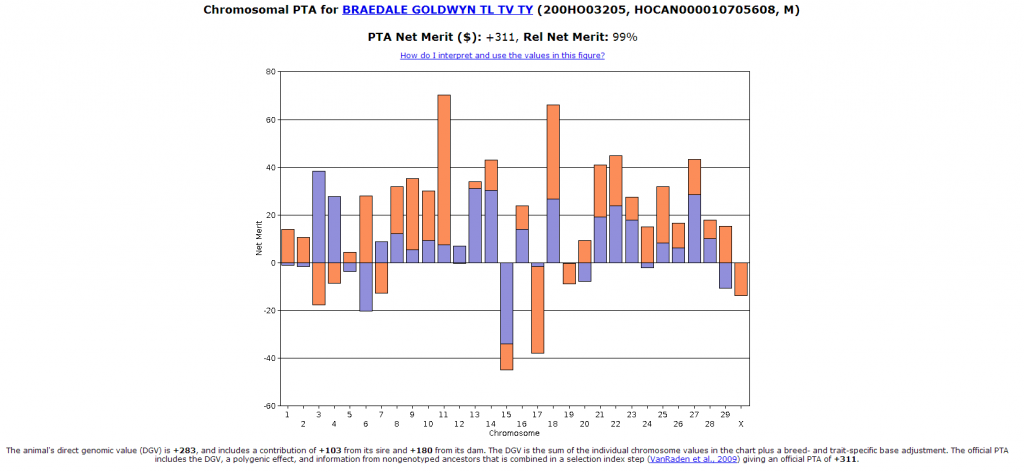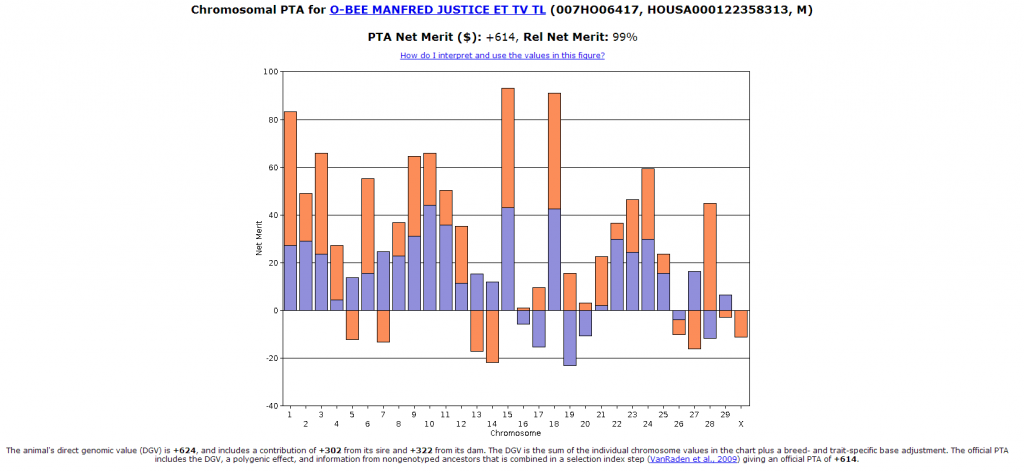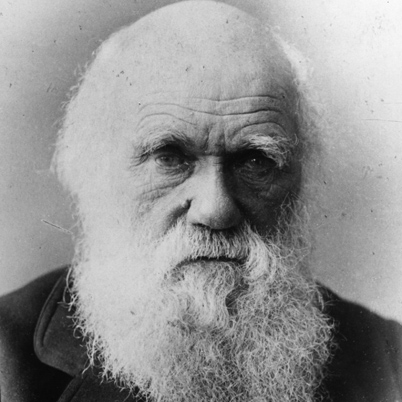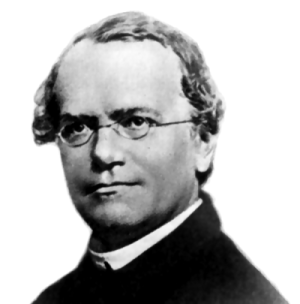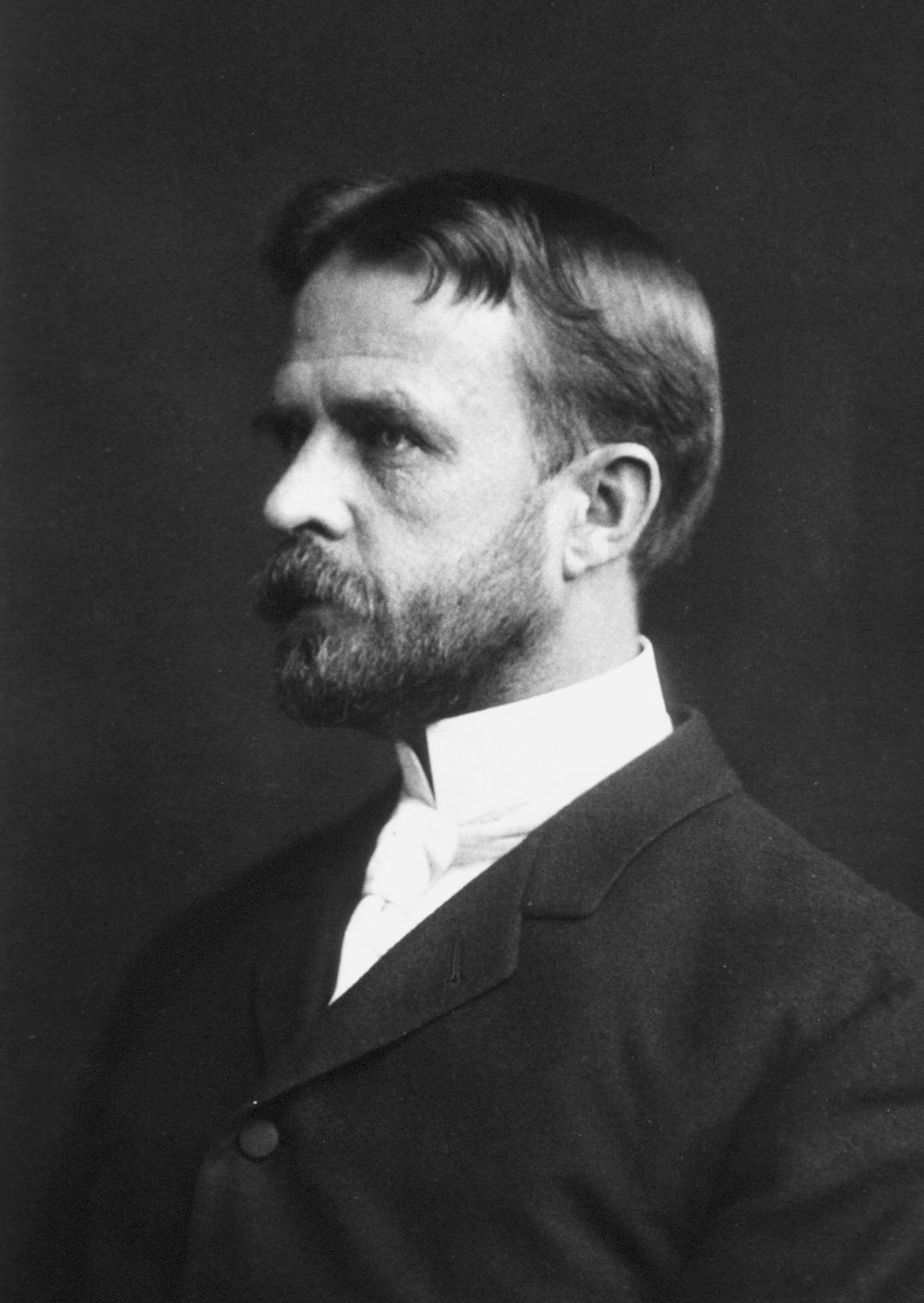 Over the years it has been almost impossible to predict which hot new sire would be the next great sire of sons. Just because a sire had a high index did not always mean that he was going to be a great sire of sons. For instance, sires like Goldwyn produced great bull mothers but did not seem to make as much of an impact through their sons. There have also been sires like O-Man that were great sires of sons, but did not seem to leave consistent bull mothers. Fortunately, genomics at the chromosomal level has started to give us insight into which sires will make better sires of sons and which ones will be more impactful through their daughters.
Over the years it has been almost impossible to predict which hot new sire would be the next great sire of sons. Just because a sire had a high index did not always mean that he was going to be a great sire of sons. For instance, sires like Goldwyn produced great bull mothers but did not seem to make as much of an impact through their sons. There have also been sires like O-Man that were great sires of sons, but did not seem to leave consistent bull mothers. Fortunately, genomics at the chromosomal level has started to give us insight into which sires will make better sires of sons and which ones will be more impactful through their daughters.
Look to the past to predict the future
There is no question that Goldwyn has been one of the biggest impact sires over the past 20 years. But for all the great daughters he has left, he has not had the same dominant performance through his sons. Recent analysis by the Bullvine actually starts to explain why. Using the Chromosomal Predicted Transmitting Abilities tool on the Council for Dairy Cattle Breeding’s website we took a look at the top 10 Goldwyn daughters with EBV and genomic tests and his top 10 sons. The following is what we found.
Table 1 – BRAEDALE GOLDWYN’s genetic contribution to his top progeny
| $NM | Sire | Dam | %Sire | %Dam | |
| Daughters |
322 |
209 |
112 |
65% |
35% |
| Sons |
293 |
158 |
136 |
54% |
46% |
It is interesting to note that Goldwyn was much more dominant (11%) in passing his genetics on to his daughters than he was to his sons. When you look deeper at this, you will actually find that Goldwyn himself actually received 64% of his genetics from his mother, BRAEDALE BALER TWINE VG-86-2YR-CAN 33*.
In order to put this into a relative comparison, we decided to look at a sire that has been the opposite scenario, O-BEE MANFRED JUSTICE. O-Man has been one of the greatest sires of sons of the past 20 years, but not as dominant on the female side. When we look at Justice’s top 10 daughters and sons we find the following.
Table 2 – O-BEE MANFRED JUSTICE’s genetic contribution to his top progeny
| $NM | Sire | Dam | %Sire | %Dam | |
| Daughters |
487 |
341 |
146 |
70% |
30% |
| Sons |
517 |
343 |
173 |
66% |
34% |
It is interesting to see that when looking at Justice’s progeny results he played a far more significant role on average, 68% of the genetic contribution to his progeny, than Goldwyn’s 59%. This is especially true where Justice contributed 12% more to his top sons than Goldwyn did. This is not surprising when you notice that O-Man himself received a much larger contribution (48%) of his genetics from his father, as compared to Goldwyn’s 36%.
Who’s Next?
Based on these trends, when looking at some of the top genomic sires from the past 4 years, we find that sires like Mogul, and Epic will be more impactful as sires of sons than say sires like Supersire and Numero Uno. This is based on the proportions of their current chromosomes coming from their sires and their dams.
As far as current top genomic sires go, DE-SU 11756 OCTAVIAN-ET, SEAGULL-BAY SILVER-ET and MR DELICIOUS COIN 15006 will be more impactful through their sons. Sires like MORNINGVIEW MCC KINGBOY and EDG JACEY MCCUT 8396-ET will probably leave more bull mothers, rather than sires of sons. Again, this is based on the proportions of their current chromosomes coming from their sires and their dams.
The Bullvine Bottom Line.
For years, we have wondered why some sires seemed unable to pass on their great genetics to their sons. Now at the chromosome level we know why. Some sires are just more dominant about passing their genetics onto their progeny than others. (Read more: The Genetic Genius of Darwin, Mendel and Hunt – Genetic Transmission and the Holstein) A sire’s ability to pass his genetics onto his progeny especially his sons, has a huge impact on whether or not he will be an impactful sire of sons. For bulls like Goldwyn, this inability means he has fewer legacy sons, while Justice’s ability to dominantly pass on his genetics has contributed to his sons reading like a who’s who list.
Not sure what all this hype about genomics is all about?
Want to learn what it is and what it means to your breeding program?





